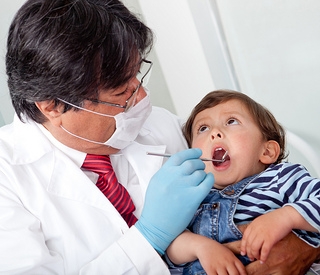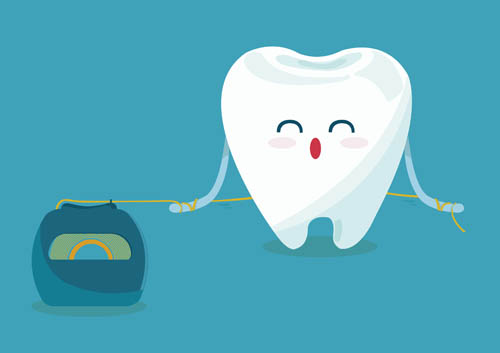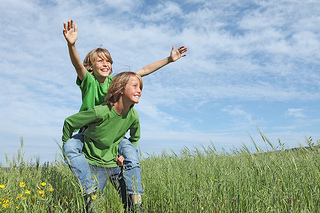May 12th, 2015

First aid training is a must when you are a parent. You can put on a bandage with your eyes closed. Perhaps even apply butterfly tape to avoid stitches. What about a dental injury? Do you have a checklist in mind on what to do when a tooth is knocked out, broken, or displaced from impact? All of these situations happen often and should be in a parent’s emergency training regiment. Luckily Dr. Michelle Slezewski and Dr. Paul Engibous and our team are here to be a resource for such an incident!
Children’s most common dental injury is chipping a front tooth. It is so common that it seems like a right of passage. Say, for example, a two year old trips and hits her front teeth on the tile floor. First, check to see if the teeth have been broken to the nerve. You can tell if you see layers and a pinkish center. Then, wiggle each tooth and make sure it is not loose. If the teeth feel firmly in place, that is a good sign. Even if they are a little loose, the teeth will tighten again with time. If she develops a severe temperature or bite sensitivity then you know treatment is needed, which may include a root canal. If there are minor symptoms that diminish with time, continued observation will be fine.
Knocking out a tooth is also common and requires more attention than observation alone. As soon as possible, locate the tooth, touch only the crown (not the root), and rinse any debris gently with milk or water. Place it back into the tooth socket as soon as possible. The American Association of Endodontists states a tooth has a high chance of survival and retention for life if it is re-implanted within five minutes or up to 60 minutes if soaking in milk or saline solution. Our team at Pediatric Dental Associates know many parents are nervous about the thought of doing this alone, but not to worry, our team is here to help!
Here’s another dental emergency example: Your child takes an elbow to the mouth during a basketball game and severely displaces a tooth but does not knock it out. What to do? First, apply light pressure in an attempt to move it back into place. Be extremely careful not to use excessive force. Place a cold pack for swelling and contact our office as soon as possible.
A dental emergency can be frightening. It is often messy and painful. The best initial reaction is to remain calm, and remember that we are here to help! Contact us at our Anchorage, AK office if your child encounters a dental emergency.
May 5th, 2015

Summer is almost here, which means a season full of vacations, adventures and great memories is just around the corner for our patients at Pediatric Dental Associates.
Everyone wants a glowing and radiant white smile when the sun comes around and we have a few reminders to keep your pearly whites healthy and beautiful over the summer! Try to stay away from drinks that will stain your teeth like coffee, soft drinks, or dark colored juices. Not only will drinks like this weaken your enamel but they will also darken that fabulous smile you're working on! Another tip is to try and focus on brushing your teeth; everyone knows that when busy schedules start picking up, getting a good brushing session in tends to take the backseat! A good tip for keeping your mouth safe from staining and other possible pitfalls is to rinse your mouth with water after any meal you can’t fully brush your teeth after. Your teeth, inside and out, will benefit!
And remember, whether you are headed to a barbecue, a camping trip, or just having fun in the backyard this summer, we want to hear all about it! Make sure to let us know what you’re up to below or on our Facebook page! We also encourage you to post any photos from your adventures!
April 28th, 2015

Of all the dental hygiene techniques you can use at home to promote clean teeth and good oral health, flossing is likely to be the one that troubles most people. It can be viewed as confusing and time-consuming, but when you learn how to floss your teeth correctly, you’ll find it’s easy to do on a daily basis.
Proper flossing techniques are vital to the health of your teeth and gums. These tips will help you with the correct flossing procedures. Likewise, Dr. Michelle Slezewski and Dr. Paul Engibous and our team can also help you learn how to floss effectively and efficiently.
Steps to Flossing Your Teeth Properly
- Choosing Dental Floss. You can find dental floss in various flavors, as well as waxed or unwaxed. If the floss you use seems to get stuck between your teeth, switch to waxed to make it easier.
- Flossing “Helpers.” Beginner flossers who have trouble coordinating the floss and the movements of their hands can use a floss holder to help them get in and around teeth.
- Preparing the Floss. Cut an 18-inch piece of floss to use for flossing a few teeth. This allows you to make progress before you must stop and cut another piece of floss.
- How to Hold It. Wind the ends around your middle fingers. Hold the floss taut, pinching each side with your thumbs and index fingers. Leave a couple inches free in the middle.
- The Process of Flossing. Use your index fingers to guide the floss toward your gum line. Bring it down between the teeth with a zigzag motion. Hold the floss in a C-shape around the tooth, and move it up and down along the side.
- Where to Floss. Use a clean portion of the floss to clean around and in between each tooth. Don’t forget about the molars in the back of your mouth, too!
Flossing: A Vital Part of Oral Care
Periodontal disease begins at the gum line; this is where flossing comes in. Regular flossing helps you remove plaque from the gum line and between your teeth to avoid gum disease. In conjunction with daily brushing and twice-a-year visits to Pediatric Dental Associates, floss each day to maintain good oral hygiene and overall health. Gum disease can have an impact on your general health, but it doesn't have to. This easy-to-prevent condition can be avoided with regular visits to our Anchorage, AK office and daily flossing. Allow our team to partner with you in maintaining a bright, shiny smile and good oral health.
April 21st, 2015

During the early days of the environmental awareness movement, those who demonstrated against pollution, toxic chemicals, and the general public health were known as hippies. The early 1970s were a time of change, and assertions that we needed to pay more attention to the Earth's atmosphere were generally dismissed. But within a couple decades, it had become clear that the previous generation was right; the citizens of the world needed to become more environmentally conscious.
Many people feel that they can't make a difference if they don't do something big. But caring for the environment doesn't have to be an all-or-nothing concept. In fact, the little things you do can add up to make a great impact, especially in our community. Here are a few ways you can help the environment on Earth Day, April 22nd and all year around.
Four Small Ways to be Environmentally Friendly
- Recycle Your Textiles. Nearly 21 million tons of textiles are added to American landfills each year, according to the Environmental Protection Agency. Donating your unwanted clothing to a secondhand store or an organization that repurposes fabric helps cut down on solid waste and conserves natural resources.
- Reduce Usage of Disposables. Plastic bottles and bags, disposable diapers and other things we can use and toss out are convenient, but they're not necessary. Simply choosing to replace one of type of disposable with a reusable product can help you cut down on waste that has a large negative impact on our environment.
- Conserve Water. If everyone in the United States turned off the water while brushing their teeth, more than 1.5 million gallons of water could be conserved. Turn the water on long enough to wet your toothbrush for brushing and rinsing, and then immediately turn the water off again.
- Turn Off the Lights. Flip the light switch to "Off" if you're going to leave a particular room for 15 minutes or more. This will conserve energy on incandescent light bulbs and cut down on cooling costs.
It's not necessary to be an activist or install solar panels all over your home to help the environment. Although you can do these things, the little everyday measures make a big difference in helping to conserve energy and the environment, while reducing your carbon footprint. Our team at Pediatric Dental Associates wants to remind you to celebrate Earth Day and help the environment, knowing that it will benefit your and your children's generation.




